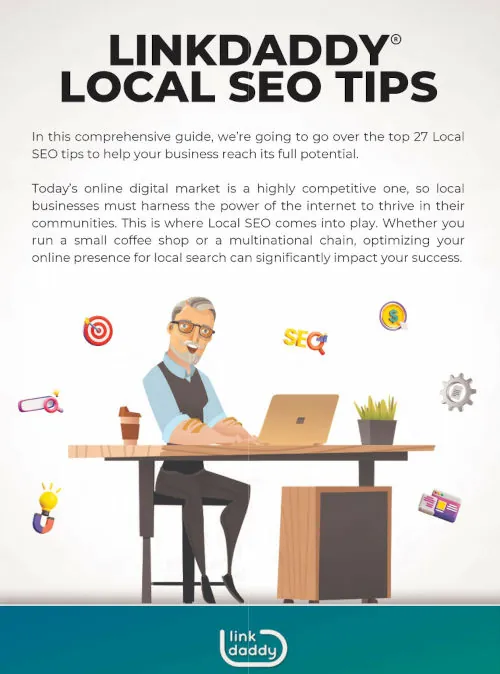
Google has confirmed that an algorithm update targeted at fighting spam is rolling out to search results worldwide and in all languages. The update is estimated to take several days to roll out, with exact details about the update being challenging to come by. However, we do know that the update will target phishing scams and other bad actors on the web that try to rank in search results by posing as highly relevant pages. This is just one of many ways that Google works to keep web users safe from harm.
Google has been working on this update for months now, but it was not clear when it would begin rolling out. This algorithm update will target a specific type of spam called “publishers” or “content farms.” These sites are often created by criminals who seek to make money by producing content that is often copied from other sources, or even worse—made up entirely of fake information. These sites are usually filled with ads that drive traffic back to them or other sites they own—and they can be very difficult for Google’s automated systems to identify because they’re often designed very similar visually and stylistically so as not to raise any red flags.
This update should help improve the overall quality of search results while also protecting users against malicious actors who want nothing more than to get information from users.
The Impact of the Update

If you’ve been following the latest updates from Google, you know that they’re serious about keeping their search results relevant and useful to users. And if you want your site to rank well in those results, you should too!
The purpose of this latest update is to improve user experience by weeding out the types of sites that exist purely for the sake of ranking in search results, rather than providing legitimate, quality content. For website owners and businesses, this means that if your site falls under Google’s definition of spam, you could see a significant drop in traffic as a result of this update. Conversely, if your site is high-quality and informative, you could see an increase in traffic.
The new algorithm looks at several factors when determining whether or not your site is spammy:
1. How often do you share links from other sites on your own site? If it’s more than 20% of the time, you may be flagged as spammy—especially if those links are all pointing back to your own content or products.
2. Do you ever ask for money or personal information from users? If so, Google considers that spammy behavior and may flag your site as such going forward.
3. Are you using “doorway” pages or redirecting users through multiple URLs before they can get to where they want to go on your site? This type of behavior is usually considered a sign that someone is trying to manipulate search results rather than provide a useful service or product to site visitors.
We All Know that Google Hates Spam. But What Exactly is it?
The truth is, there’s no one-size-fits-all definition of spam. It’s a broad term that can mean different things to different people and for different reasons. In fact, it’s a bit of a moving target; as Google updates its algorithm, the definition of “spam” will also change.
In general, though, we can think of spam as any content on a website that doesn’t serve its users—or worse, actually harms them. For example, if you have ads on your site that redirect users to an unrelated site or pop up with no warning at all when they visit your site (known as “malvertising”)—that’s spammy content! Or if you have fake reviews on your site from people who never actually bought anything from you—that’s also spammy content!
Of course, this isn’t always cut and dry. There are some cases where even well-intended website owners or digital marketers can inadvertently create spammy content without meaning to; such as if they unknowingly use black hat SEO tactics or purchase low-quality links.
Google’s latest algorithm update is intended to crack down on websites and businesses that engage in questionable or outright shady practices – such as those outlined above. If your site falls under Google’s definition of spam, you could see a significant drop in traffic as a result of this update. On the other hand, if your site contains high-quality content that provides value to users, you could see an increase in traffic due to better visibility in search results. either way, it’s important to be aware of these updates and take steps accordingly to ensure your website’s Rankings aren’t adversely affected.
The most important thing you can do is make sure your website is optimized for user experience (UX). This means having high-quality content that answers user questions, provides useful information and/or entertainment and doesn’t just exist for the sake of ranking higher on search engine results pages (SERPS). You should also focus on improving your website’s speed so visitors don’t have to wait long for pages to load before they can use them; this will help improve both user experience and rankings since slow-loading sites tend not to rank as well.
The Dangers of Spam

Spam can be defined as any low-quality site that tricks users into providing personal information or installing malware. It can also refer to phishing scams and other bad actors on the web that tries to rank in search results by posing as highly relevant pages. Whatever the case may be, spam is a serious problem on the internet today and Google is working hard to fight it.
Google is constantly trying to improve its search algorithm so that it can better detect spam and filter it out of your search results. However, there are still some websites that are able to succeed at getting their content indexed by Google’s search engine—despite being classified as spammy.
How do these sites manage to get away with this? They’re commonly referred to as “content farms.” Content farms are sites that have been created primarily for the purpose of ranking well in search engines rather than providing meaningful content for readers or helping them solve problems with their businesses or lives.
Google has been at the forefront of fighting the spam for many years now. They have always taken a very strong stance against it, as they know how much damage it can cause to their users. They have implemented various algorithms over time that help them identify these types of sites and remove them from search results.
Spam is a serious problem for everyone, including you.
It can be hard to spot when you’re being spammed, though, so it’s important to be aware of the signs. Here are some things to watch out for:
-You get emails from people you don’t know who say they’re just “checking in” on you or want to “catch up over coffee.” This is usually spam and should be ignored.
-You receive emails from companies that aren’t familiar to you, but they seem like they might be legitimate because they have a website and an address—even if it’s not accurate. Again, this is probably spam and should be ignored.
-You receive emails with attachments that look like invoices or other official documents but actually contain malware or viruses that could harm your computer if opened. Do not open any attachments from unknown senders!
Spam is everywhere, so it’s important for everyone to be aware of the dangers of spam and how to avoid it. If you think you may have been a victim of spam, please contact your local authorities or the FTC immediately.
How Google Is Helping To Fight Spam

Google is constantly working to fight spam and keep web users safe from harm. In addition to rolling out algorithm updates like the one mentioned above, they also have a team of dedicated engineers who work tirelessly to sniff out spam and put a stop to it. They also provide resources like this helpful blog post on how to avoid falling victim to online scams.
The most important thing you can do as a web user is vigilant when it comes to your online safety. Be aware of what you’re clicking on and where it’s taking you—and don’t click on anything unless you know exactly what it is! Don’t trust pop-ups or links from people who aren’t familiar to you; if something looks too good to be true, that’s because it probably is! And finally, make sure your computer has up-to-date anti-virus software installed so that even if something does get through all of your defenses, it won’t be able to cause any real damage.
Here are some tips on how you can avoid falling victim to online scams:
-Check out the URL of any website before you click. If you see something that looks suspicious or unfamiliar (such as “[email protected]”), leave it alone!
-If you receive an email saying that your account has been compromised or that your password will expire soon, don’t click on any links in the message—instead, go directly to PayPal’s official website (www.paypal.com) and log in there before doing anything else!
-Remember, never give out personal information over emails or chats. It can be easy for hackers to access these and hack your personal accounts.
Online scams are a big problem—one that affects everyone from individuals who lose their hard-earned money on fake websites and fraudulent products, to businesses that fall victim to phishing scams and other forms of cybercrime. Google’s “Protecting Users Online” team is dedicated to protecting your security and privacy online so that you can focus on what matters most: making your business thrive!
The Bottom Line
In the last few years, spam has become an increasingly serious problem on the internet. The problem is particularly bad for Google and other search engines since spam can severely affect their reputation and make it harder for people to find what they’re looking for online.
This is why the bottom line is this: be aware of the dangers of spam and take steps to avoid it. Google is doing its part by constantly working to fight it, but we all need to do our part. If you think you may have been a victim of spam, please contact your local authorities or the FTC immediately. Together, we can make the internet a safer place for everyone.
There are several different kinds of spam—some are just annoying and some can be downright dangerous. But no matter what kind you’re dealing with, there are a few things you can do to avoid getting caught up in it:
-Don’t click on any links in emails from strangers or even people you know if they don’t seem like they would normally send you a message like that (for example, if they mention things like “this is an urgent message” or “we need your help right now”).
-Make sure that the sites you visit have secure connections (look for HTTPS instead of HTTP). If they don’t have secure connections, don’t use them! A secure connection means that all data sent between the device and the website is encrypted, so if someone were to intercept that information, they wouldn’t be able to read it. An unsecured connection leaves you vulnerable—and could lead to identity theft or other crimes like credit card fraud.
-Make sure your computer’s security software is up to date so it can protect against malware that could be used to steal information from your computer or infect other computers through them.
We are all well aware of the dangers of spam. It can be extremely frustrating, and it wastes our time and money. Perhaps you’ve even been scammed in the past. But there’s good news: Google is doing its part by constantly working to fight spam, and we all need to do our part to make the internet a safer place for everyone!









